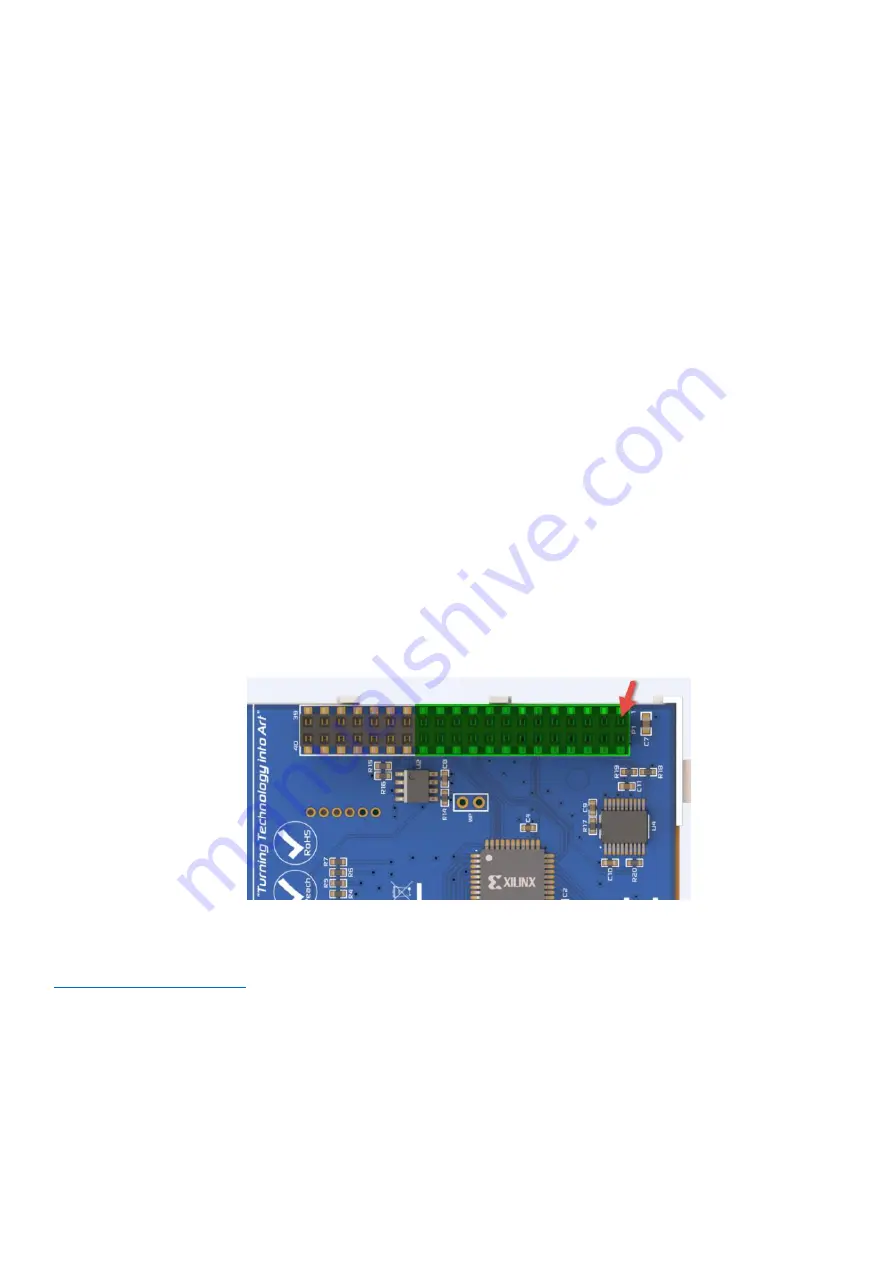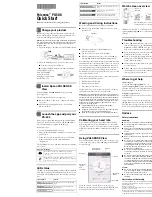
© 2015 4D Systems Pty Ltd
Document Updated: 09 November 2015
4/4
Software requirements
1.
Follow the Software Download / Installation Instructions found in the product datasheet under chapter 4.2
2.
Setup Raspberry Pi to manually load the DT overlay. Usually the Raspberry Pi loads a DT overlay that
matches the HW attached. This is now recognized via the onboard EEPROM which will be read via the
ID_SC and ID_SD pins. The RPI A or B versions do not have those pins. Instead it can be read from file
system.
a.
Open your config.txt with nano:
# nano /boot/config.txt
b.
Add the following in a new line:
dtoverlay=32-hat
or
dtoverlay=35-hat
(there should be a DT overlay named XX-hat.dtb in /boot/overlays)
c.
Save the changes made to /boot/config.txt.
d.
Shutdown the Raspberry Pi safely, and remove the power.
Hardware Connections
Ribbon Cable and Pin Header
1.
Connect the Ribbon cable to the 26 Pin header of your raspberry pi
2.
Insert the Male Header to the other side of the ribbon Cable
3.
Insert the Connector to the first 26 pins of the 4DPi-3X “P1” Pin header and make sure RPi pin 1 lines up
with pin 1 of the 4DPi. The pin numbers can be found on the silkscreen.
40 Way PCB Socket
1.
Cut the PCB socket to size -> remove the first seven pin pairs from the socket.
2.
Insert the resized PCB socket with 26 pins into your 4DPI-32/35 Module. Observe the pinout on the
silkscreen.
3.
Insert the Raspberry Pi pins into the PCB socket. Observe the pinout on the silkscreen.
If you have any questions regarding this workaround, please contact 4D Systems Technical support at






















